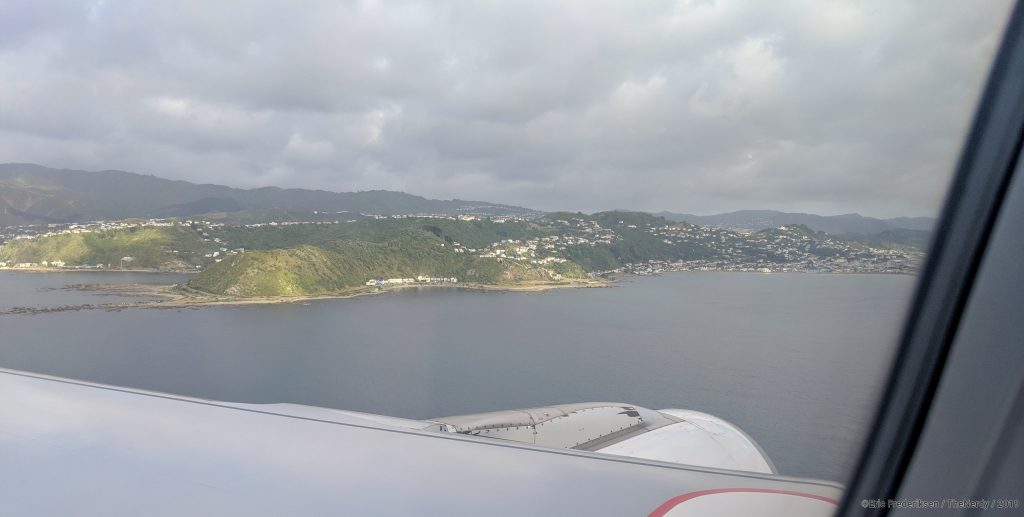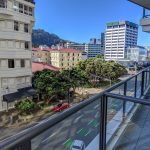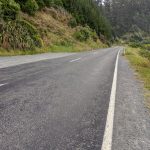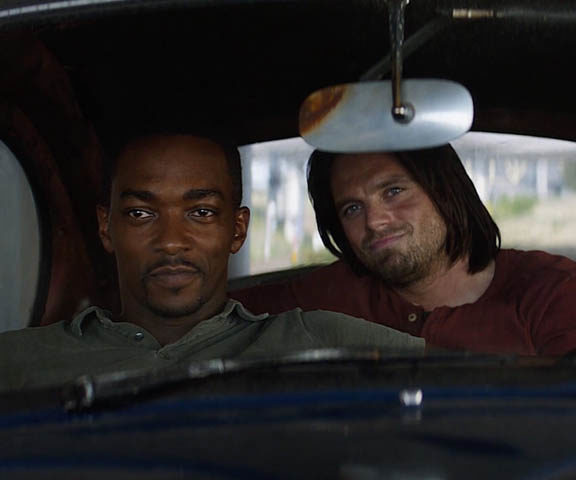It took me way too long to do it, but I finally made my way overseas, visiting New Zealand for a few days for a press event this winter. This was my first time flashing my passport, my first time traveling over an ocean instead of alongside it. In just a few short days, I learned both how well-prepared and how ill-prepared I was for the trip. And now I’m back to share what went right, what went wrong, and what you need to know before you go. Here’s what I learned from my first international trip.
Sitting is Exhausting
14 hours on a plane is a long time. It sounds like a long time, but you won’t really understand just how long until you’re actually there. I didn’t understand. I had no idea. What options there are for coping with that much sitting will vary from airline to airline.
Contact the airline ahead of time to see if they can tell you what amenities will be available on the plane you’ll be riding. For example, the Air New Zealand airplane I flew from Houston to Auckland had footrests and seats with a greater leaning angle, but the plane didn’t have power outlets in economy. Air New Zealand had free Wi-Fi, while United wanted a cool $20 to get online. $25 to upgrade a seat sounds like a lot for a 4-hour flight, but for 14 hours, it might make a huge difference.
Get up and stretch. This one can be tough if you get a middle or window seat, but get up every few hours and walk around. Flex your joints and muscles. See what hurts after a few hours and find a new way to sit. Respect your fellow passengers, but take care of yourself, too.
 This building houses the coolest theater you’ll never go into, and that I wasn’t allowed to photograph.
This building houses the coolest theater you’ll never go into, and that I wasn’t allowed to photograph.
Drink so much water. More than you think you should. I can’t stress this enough.
Figure out ahead of time if you can sleep sitting up. Not every plane has super-relaxing seats, and not all of us can afford those dope business-class digs that make you feel like a skygod. If you’re flying economy, there’s a very real possibility that you might have to spend 14 hours packed into a sardine can. I’m a side sleeper, so sleeping on the plane wasn’t happening for me.
A friend who has a decade of experience as a professional tour guide swears by the weird-looking J-Pillow , which I’ll be looking for next time I’m jumping on an overseas flight. Maybe on a Saturday night, see if you can fall asleep in your computer chair – it’s a pretty good comparison of how much space and what kind of angles you might have available in-flight.
In the gallery below, the only parts of the Weta Workshop you’re allowed to photograph.
Sleep when you get there
If you can’t fall asleep, it’s not the worst thing. It sucked while I was traveling – roughly 30 hours each way when accounting for three flights each direction to get to Wellington, New Zealand; layovers; time spent in customs. The thing is, once I got to my destination, I slept like a baby, and the dreaded jetlag sleeplessness ended up being almost non-existent for me. Both getting there and returning home, I powered through until night time and got a full night’s sleep in. I’m not good at sleeping on planes, but I am good at sleeping.
Isolate yourself with some noise-canceling headphones. Good ones, if you can afford them. I can’t stress this enough. My Sony 1000xm3 headphones were truly a source of sanity for me on the trip. Headphones with a good seal can be passable, but those can often be tiring to wear. My XM3 headphones ended up being comfortable for wearing for extremely long periods, and the battery held up admirably across my flights. Good noise-canceling ensured that I could escape the droning of the plane and the inevitable people noise around me. The kid who I’m pretty sure was crying just for the sake of crying. The incessant coughing that, had I not had a way to ignore it, might’ve gotten me psychosomatically sick just through pure proximity.
But make sure those headphones have a 3.5-mm audio plug, too. Overseas flights still suck, but the airlines have gotten better at keeping us distracted. There’s an incredible number of movies available to watch. I checked out The Shape of Water, Arrival, and Die Hard on my flights, and the movies are typically unedited.
And don’t expect to be able to use your laptop. The degree to which some seats lean back means you won’t have much room to spread out, and it varies. For example, I couldn’t do work on the flight to my destination on my 13-inch Lenovo laptop, but on the way back someone a few seats over got out his 15-inch laptop and literally played Skyrim for 12 hours straight. But you might end up on flights like the former when that seat-back screen or a Kindle will be an absolute necessity.
The Boring Stuff
Paperwork. Do it. Get your passport now. Even if you’re not getting ready to travel. Just do it. Stop putting it off. Applying is easy. Pharmacies (like Walgreens) will take your passport picture for a few dollars. The further ahead you can get it, the better.
When you are getting ready to travel, print out information about your plans. What hotel you’re staying at, your return-flight itinerary. Take notes on where you’re staying, whether you’re renting a car, what cities you plan to go to. In my case, I’d put off getting my passport, and that caused New Zealand’s customs office to take notice of me. I spent an hour with them poking through my bags and asking me questions. Having my itinerary printed out in detail was a saving grace for me. Packing light is smart, and I wish I’d organized my stuff more carefully to make it easier to put away. I should’ve had my papers in a folder and my cables in plastic bags, for example.
Check out that country’s drug laws. Japan, for example, is pretty hard on certain drugs that we use frequently over here as medical treatments. Stimulants are right out. Don’t even mess around with marijuana of any kind. Check your destination country to see what they allow and don’t allow and then, if necessary, contact your doctor for a copy of your prescriptions and declaration letter. I was able to do this through my office’s messaging system – no appointment necessary. Bring these pills in bottles, and bring just enough to get you through the trip.
Notify your credit card companies. Any card you think you might use while traveling, contact the company. Many of these companies will let you set up a travel notification without even interacting with a person. This ensures that your card will function while you’re in that country, and that might even get you out of having to visit the currency exchange. I just used my local bank card in New Zealand without a problem. No headaches.
Figure out if your phone works. For example, Google Fi allows free texting, and data doesn’t cost any more in New Zealand than it does in the United States. Different providers have different country lists, but it was essentially a seamless experience for me. If your cell provider allows calling over Wi-Fi, one nifty trick you can use is to rent a portable 4G hotspot with data and tether your phone to it. This way, you’ll be able to make calls to back home as if they were local calls. It’s also generally cheaper and less of a hassle than getting a SIM card – or an entire phone – specifically for that trip.
Get a couple of power adapters. They often come in packs of three, and they’re not expensive. Different regions have different power adapters and voltages. For example, your laptop and cellphone chargers will work in New Zealand without anything more than an adapter, but stuff like hair dryers will take more work. General rule of thumb is, anything with a motor in it needs a voltage changer, not just a plug adapter. Bring more than one of these adapters, because they’re small and easy to lose.
Make Memories
Actually plan a trip. Even if you’re heading to this brave new world for work, you’ll likely have some downtime. Don’t spend it in your room. You sat in a murder chair for however many hours to get here, and there are weird plants and animals to look at and shopping options to try. Look up restaurants near where you’ll be staying. Try to guess at how much free time you’ll have and plan something that fits into that. But plan it. Write it down on paper with some rough guesses. And try to go to at least one thing that doesn’t involve spending money or doing a thing. Libraries, museums, parks, and other municipal attractions can all be interesting. Just exist in the place for a few minutes like it’s totally normal for you to be there.

Bet you can’t guess what kind of sandwich this is.
Bring a good camera that you know how to use. Read both parts of that sentence – they’re equally important. Fiddling with a DSLR you bought just for the trip and have no idea how to use is as bad as bringing the camera attached to your five-year-old smartphone that doesn’t handle light well or has any optical image stabilization. If you want to take back memories, it’s smart to bring a camera that will let you capture the memories in focus and on-time instead of blurry and 30 seconds too late.
Have you managed to make your way outside the borders of the United States (or your home country)? What was your experience like? What do you wish you’d known?


























































